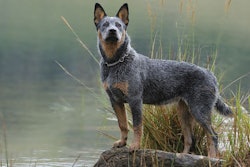
Several pet food trends, such as BARF and paleo diets, seek to replicate what dogs’ ancient ancestors ate. However, people don’t have much evidence of exactly what those dogs ate in the past. People didn’t record it, and scientists hadn’t studied the topic much until recently. Scientists have found clues about what some dogs ate before agriculture though.
One group of archeologists looked for clues about dog’s ancestral diets by doing essentially what pet nutrition scientists do with modern dogs. They collected dogs’ feces and analyzed it. The archeologists collected preserved poop from dogs that had lived at a site where farming was little practiced or impossible, although from a time long after dogs were fully domesticated. Southern Alaska was just such a place from approximately 1300 to 1750 when Yup'ik people lived there with their dogs, prior to European contact, near present day Nunalleq. Archeologists found a snapshot of what those dogs ate preserved in the permafrost.
“An important caveat is that we only analyzed a few samples from one archaeological site, so we cannot make broad statements about all dogs in the past,” study lead author Anne Runge, then with the University of York, England. “The diet of dogs is likely to have been quite different between places, especially between the Arctic and areas where resources were available throughout the year.”
The journal Proceedings of the Royal Society B published the results.
Evidence of dogs’ diets before agriculture
The scientists analyzed the proteins in the preserved feces to look for signs of what the Nunalleq dogs had eaten. Not surprisingly, those dogs ate various salmon species, such as coho, chinook, sockeye and chum, which still live in the area. The dogs had eaten muscle and bone tissues as well as roe and guts from the fish.
“What I think we saw in our samples is the result of salmon being caught during the salmon run, the guts were removed and fed to the dogs before the fish were prepared for winter storage,” Runge said. “Our results are only a very small piece of evidence in support of this, but personally, I think it is likely that dogs have eaten organs rather than purely muscles for as long as they have lived alongside humans.”
She noted that there isn’t much archeological evidence that dogs in the past were fed intestines and other scaps. However, more recent ethnographic accounts, Arctic dogs were given the parts of animals that the humans did not want to eat themselves, while others record dogs being given whole fish.
Like the humans that they accompanied around the planet, dogs likely ate a range of foods, depending on what the environment provided. As dogs evolved from wolves, they developed a greater ability to digest starch, especially in areas where agriculture flourished.
However, there are a lot of variables to consider in these questions because dogs come in so many shapes and sizes, Runge said. Also, they have very different histories depending on which part of the world they came from.

















